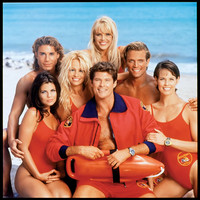Ford Escape Hybrid Delivers Total Package for Los Angeles County Ocean Lifeguards
 |
"We are the largest lifeguard organization in the world, and we have always blazed the trail for the profession," said Mike Frazer, chief, Lifeguard Services, Los Angeles County Fire Department. "We wanted to be the first public safety agency in the country to go green."
"This continues the Escape Hybrid's impressive string of endorsements," said Hal Dewsnap, California regional sales manager for Ford Motor Company. "In addition to being clean and fuel-efficient, the Escape Hybrid is highly functional and durable, proven in hundreds of thousands of miles in taxi service in New York and San Francisco. Now, we are adding lifeguard duty to the list."
There is no better vehicle for that assignment than the world's most fuel- efficient SUV. The front-wheel-drive Ford Escape Hybrid returns 34 mpg in city driving and 30 mpg on the highway. Intelligent four-wheel-drive models, like the ones used by the lifeguards, return 29 mpg city and 27 highway.
"The Escape Hybrid is one of the cleanest vehicles available today," added Freeman Thomas, Ford Design Director whose studio developed the design of the Lifeguard vehicles. "It meets California's strict Partial Zero Emissions Vehicle (PZEV) standard. To put it in a California summer context, it releases fewer smog-forming emissions into the atmosphere during a three-hour drive (about 180 miles) than grilling one hamburger in your back yard."
Frazer says he knew that the Escape Hybrid was an ideal choice from an environmental standpoint, but he admits to having some initial reservations about whether an SUV would function as well on the beach as the compact pickup trucks the lifeguards were used to driving.
"The switch from a pickup to an SUV was something new to us, but when Ford brought the Escape Hybrid down to the beach, we were amazed at how well it performed," he said, adding that he was particularly surprised by the vehicle's ability to navigate through the sand without getting stuck.
With the Escape Hybrid, Frazer says he was also able to make more precise turns, enjoy extra headroom (he's 6'5") and gain greater visibility, which is a huge safety plus on the beach.
"We need to be able to see as much as possible because there's so much activity on the beach, especially in the summertime," he said. "When we're responding to a rescue, we want to get there quickly and safely."
Shortly after that initial field test, a team of designers from Ford's Irvine studio visited the beach to do a little "guerrilla research," says Ford designer Jeff Nield.
"These people save lives, so this was not just an exercise in styling," said Nield. "We wanted to design features for them that are functional and could potentially save them valuable time in an emergency situation."
Careful inspection of the previous trucks the lifeguards were using revealed various makeshift storage areas for critical equipment.
"What happened in the past is that different lifeguards would set vehicles up differently, so if you worked at one beach and then got called in a crisis to another location, you would have to search to find the emergency tools you needed because the storage area was not standardized," he said.
The Ford designers decided to remove 60 percent of the rear seat on the driver's side and replace it with a rescue equipment storage unit - an aluminum box with specially designated spaces for important emergency equipment, such as defibrillators, trauma boxes and oxygen tanks.
The remaining 40 percent of the seat was left intact in case the lifeguards had to transport someone, such as a lost child.
According to Ford Design Project Manager, Greg Hutting, the lifeguards' multiple radios also presented the design team with a challenge.
"In the previous vehicle, they had three or four different radios pushed wherever they had room," he said. "We pulled out the center console and replaced it with a radio rack that keeps all of their equipment lined up and organized."
Ford designers also outfitted the Escape Hybrids with a custom-fit roof rack for the lifeguards' paddle board and spine board, and easy-to-clean rubber floor mats and cargo liners.
When it came to the exterior, Nield says it was important to make the vehicle look "fresh but not trendy." The vehicles were painted a vibrant yellow - iconic for lifeguards - and then detailed with authoritative graphics and finished off with dark wheels.
"We really pushed to make the vehicle look as rugged as possible," said Nield.
Frazer says he couldn't be more pleased. "The vehicles look amazing, they perform great and they are hybrids, so they are good for the environment," he said. "It's a win, win, win situation for us."
It's also a win for Ford Motor Company.
"The lifeguards are going to be pushing these vehicles to the limit, and they need the best vehicle to get the job done," added Nield. "They had choices, and they chose the Ford Escape Hybrid."



